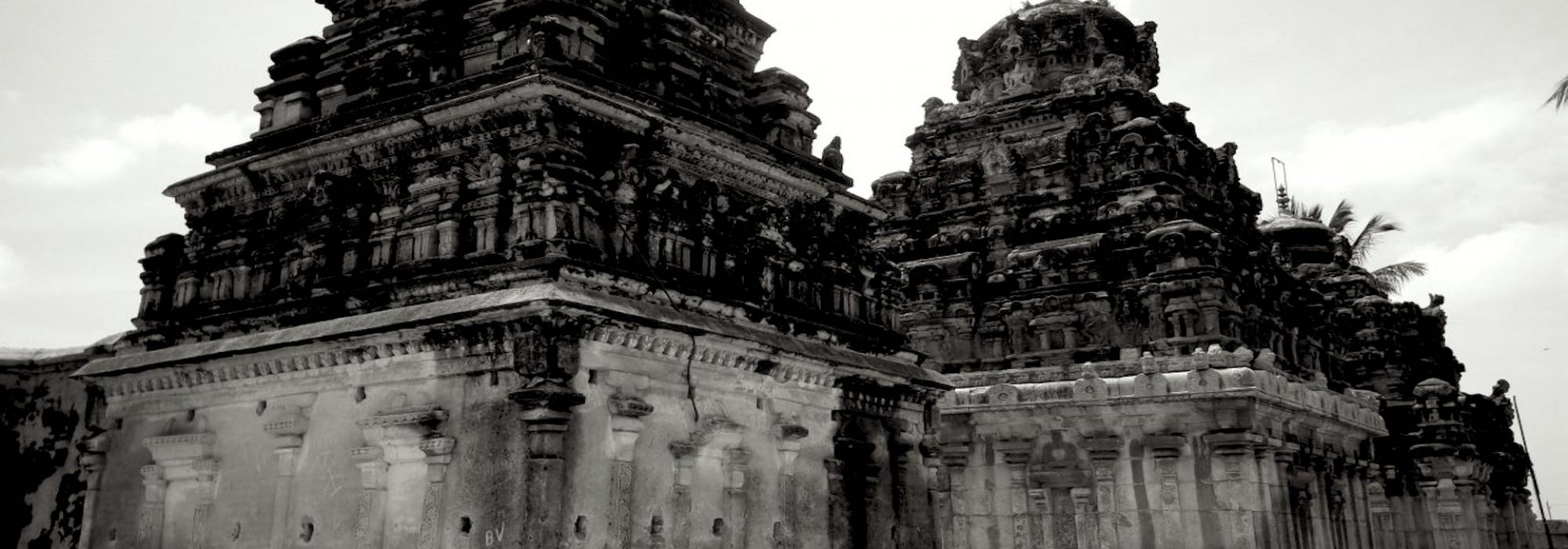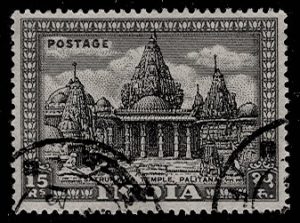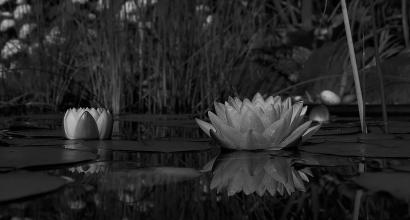Earlier in this series, I had written about my maternal grandmother Sakamma. Naranappa was her husband.
I’m unaware of how he was transferred to the Mulubagilu region or where he was employed prior to arriving here. He was appointed as the Sheikhdar of the Baikur Hobli, Mulubagilu Taluk. It appears that in those days, the elders of my family didn’t know he hailed from my own community.
Initially, my grandfather Sheshagiriyappa didn’t have a very favourable impression of Naranappa; he always assumed that Naranappa was a terrible miser. Apparently, his clothes were always shabby and torn. The front portion of his coat was always protruding and baggy. My grandma said that this quotidian dressing sense and unbecoming appearance was responsible for creating a prejudice in Sheshagiriyappa’s mind.
Over time, my grandfather realised that Naranappa was endowed with a very noble character and conduct. Naranappa was a very competent worker. He possessed great integrity, and a genuine love for people. These apart, I don’t know much about the other details of his life.
Suryopasanam: Worship of the Sun
In his childhood, Naranappa suffered from repeated bouts of epilepsy. During that period, some unknown person initiated him into Suryopasanam (traditional worship of the Sun). Accordingly, Naranappa began performing Suryanamaskara (one of the elements of Suryopasanam) daily without missing a single day. It didn’t matter where he was: at the circuit (touring on government work) or in a Kasaba (an administrative unit)—he would unfailingly perform the Suryanamaskara before sunrise. In a procedure named Truca Kalpa, the main mantra involved in this Suryanamaskara begins like this:
Udyan Adyan adyamitratamah ||
In order to perform this daily ritual, Naranappa always carried the relevant Puja ingredients with him in the bag placed on his horse. A copper Surya Chakra (Sun represented as the Wheel of time) whose dimensions measured about five—six inches; a big copper vessel about the height of the middle finger and a tumbler about the height of the small finger. To keep the Kalasha, two small brass stools spanning the width of a palm. A small conch and its tortoise-holder. A small bell. These were housed in a bamboo bag. A smaller bamboo bag contained a chunk of jaggery and Vibhuti wrapped inside a Bilva leaf. These Puja ingredients were his constant companions wherever he went.
Daily Ritual
He had to constantly tour various villages on work—about three or four times per week. During the course of such journeys, at sunrise, he would dismount from his horse at a well or lake that had clear water. He would extract the Puja ingredients from the bag, finish his bath and Sandhyavandanam and perform the Suryopasanam. After this, he would perform twelve Suryanamaskaras. If nothing was available, he would offer a chunk of jaggery as Naivedya (consecrated offering to the Deity). He fasted at night. On every Sunday in the Magha season, he would offer meals to Brahmanas apart from the regular Puja. On Rathasaptami, he would hold a grand feast to which everyone was invited. All this he carried out without fail.
After he was initiated into Suryopasana, there was absolutely no fear of epilepsy. After he passed away, his wife (my grandmother) kept this tradition alive. She maintained a Vrata (vow) named “Apakva Sunday” (literally: Unripe Sunday). On every Sunday in the Magha season, she served meals to two or three Brahmanas and gave them Dakshina (offering money, clothes, fruits, grain, etc). On Rathasaptami, she would arrange a rather extra-grand feast. The massive cauldron in which Payasam was prepared during these extra-grand feasts is still in my home. But now, it isn’t meant for Payasam. Forget Payasam, our present condition is such that we can fill it up neither with milk nor even water.
Until very recently, I have seen Naranappa’s Puja ingredients, the Surya Chakra, and other items in my home.
My grandmother Sakamma’s maternal home is Sarjapura (today’s Sarjapur on the outskirts of Bangalore). That home was known by the nickname of Shivapuje (or Shiva Puja). When I was a very little boy, my grandma took me and my parents to her brother, “Shivapuje” Naranappa’s home in Sarjapura. If I recall correctly, my grandma’s elder brother, “Shivapuje” Appaji had passed away by then.
“Shivapuje” Naranappa was a widower. Only two people lived in that home: Naranappa and his son—I think his name was Subrahmanya but now I forget the correct name.
Naranappa was employed as the Village Postman. Which is why he was also known as “Postman Naranappa.” He had to deliver postal mail and money orders to the neighbouring villages. The post office would bundle all the postcards, letters, and envelopes to be delivered to these villages into a sack, tie it to a stick and hand it over to Naranappa. The post office personnel would tie a garland of anklets to one end of the stick. Naranappa would haul this sack on his shoulder and walk at a fast pace. When they heard the sound of the anklets, the village folk would know that postal mail had arrived. Naranappa would untie his sack at the appropriate village, distribute mail and proceed. Over time, the village folk became habituated to this and waited upon Naranappa on their own volition and collected their mail. Naranappa earned a monthly salary of three rupees from this profession.
He also owned some land.
In the past, Naranappa’s house measured about fifty or sixty squares. When I saw it, most of the structure had collapsed and only about eight or ten squares remained. It was a mud construction at that and it leaked in several places.
Deities
But there was a speciality in there. A sturdy room was dedicated to the Devatas, it was the Puja room. Nowhere else have I seen the sheer number of Murtis that I saw in that room. No Matha housed a larger number of Murtis than did that house. About fifteen or twenty Murtis adorned the room in a step-like fashion from the floor to the ceiling: Vishnu’s Dashavatara, the Panchayatana Murtis of Sri Rama, Kodandarama. Various Murtis of Sri Krishna: Navanita (Butter) Krishna, Kneeling Krishna, Gopikrishna, Kaliyamardana. Murtis of Srinivasa, Chandrashekhara, Gowrishankara, Ganesha, Subrahmanya, Navagrahas, Ambika, Mahalakshmi, Mahishasuramardini…As in form so in size: from thumb-sized to one-and-half feet high. Together with these hundreds of Murtis, there were also the Balamuri conch, Emerald Lingam, Spatika Lingam, and coins made from the Ramatanki mint.
Parthiva Puja
Naranappa would awake at five in the morning, take bath in cold water, apply the Vibhuti across his forehead, wear three or four garlands of Rudraksha, and then perform what’s known as the Parthiva Linga Puja. As far as I am aware, the practice of Parthiva Linga Puja doesn’t exist anywhere in the present time. To me, it appears that it is one of the best forms of Ekanta Bhakti—Bhakti offered in absolute solitude. The devotee obtains a bit of mud from an anthill. This mud is wet. The next morning, after the bath and Sandhyavandanam are finished, the devotee makes an impression of the Shiva Lingam with this mud and places it in the centre of his left palm. With his right hand, he performs Puja to it. The Mantras chanted during the course of this Puja begin with the celebrated Om Nidhana pataye namah and the rest. This is verily the Shiva Lingam in one’s palm. All that’s needed for this Puja is the Tumbe flower (Leucas aspera) and Bilva leaves. On occasion, when our “Shivapuje” Naranappa was unable to obtain anything, he would offer the fried gram meant for the horse as Naivedya.
People addressed Naranappa with the honorific “ShivapujAdhurandhara” (Most Exalted among those who perform Shiva Puja).
A particular incident occurred when I visited their home in Sarjapura. Naranappa was delighted that his younger sister and her children had visited him. He liked spending time with them. But then who would carry the postal mail? He assigned the task to his son who was both competent and highly energetic. In every way, he was deserving of his father. He happily agreed. However, he had no clothes apart from the Dhoti he was wearing. As he prepared to leave home, Naranappa took off his own Dhoti and gave it to him.
The son asked in Telugu: “what will you wear?”
The father: “The skin that Parameshwara has given me.”
This incident has remained deeply etched in my memory. My grandma and others laughed at this. It was the laughter that attempts to conceal material poverty.
The Earnings of Appajayya
That evening I asked my grandma why this home had been reduced to such appalling poverty.
She said: “My grandfather Appajayya was in the service of the Nawab of Sarjapura. He served in a very high position. That Nawab used to embark on periodic looting sprees to various temples and brought back heaps of precious booty. One day he sent for my grandfather and asked: ‘Appajayya, take whatever you want from this. The rest, I’ll have it thrown in a well.’ My grandfather chose all these Murtis and some Saligramas. But he forgot to ask the most important thing: ‘you’re giving me so many Deities. Give me four or five acres of land which will enable me to offer Naivedya to these Deities.’ Now these Deities have become a burden on this home. There’s no means to even light the lamp for them. This is the condition of the home I was born in.”
My grandmother’s eyes became moist when she said this.
The Supremacy of Shiva Bhakti
Now for the final scene.
Naranappa’s son passed away. Naranappa’s house completely collapsed. He grew into ripe old age but didn’t abandon his Shiva Puja even once. He would sit on the veranda of some random house and pass his time. His limbs didn’t have strength to walk to the village temple. Neither did he desire anything.
He would request some house for water for his bath. They would draw two potful from the well. He would sit in the courtyard and begin his Shiva Puja. The mantras would flow from his mouth in melodious torrents, loud and clear in their pronunciation. He was content just with that. He derived his happiness from merely uttering “Shiva,” “Shiva, Mahadeva.”
He never entered anybody’s home. He used their courtyards only for taking bath. If any random Brahmana in the village brought him a couple of morsels in the afternoon, he would eat that and sleep on the veranda.
Thus did his avatara come to an end on this earth. Not once did he confide in anybody that he was beset with difficulties. Forget others, he didn’t think even to himself that he faced difficulty.
This was the nature of his devotion to Shiva.
This is the eighth chapter of D.V. Gundappa’s “Jnapaka Chitrashale” entitled “Shivapuje Naranappanavaru” appearing in the volume entitled “Sankeerna Smruti Samputa.”













































Comments